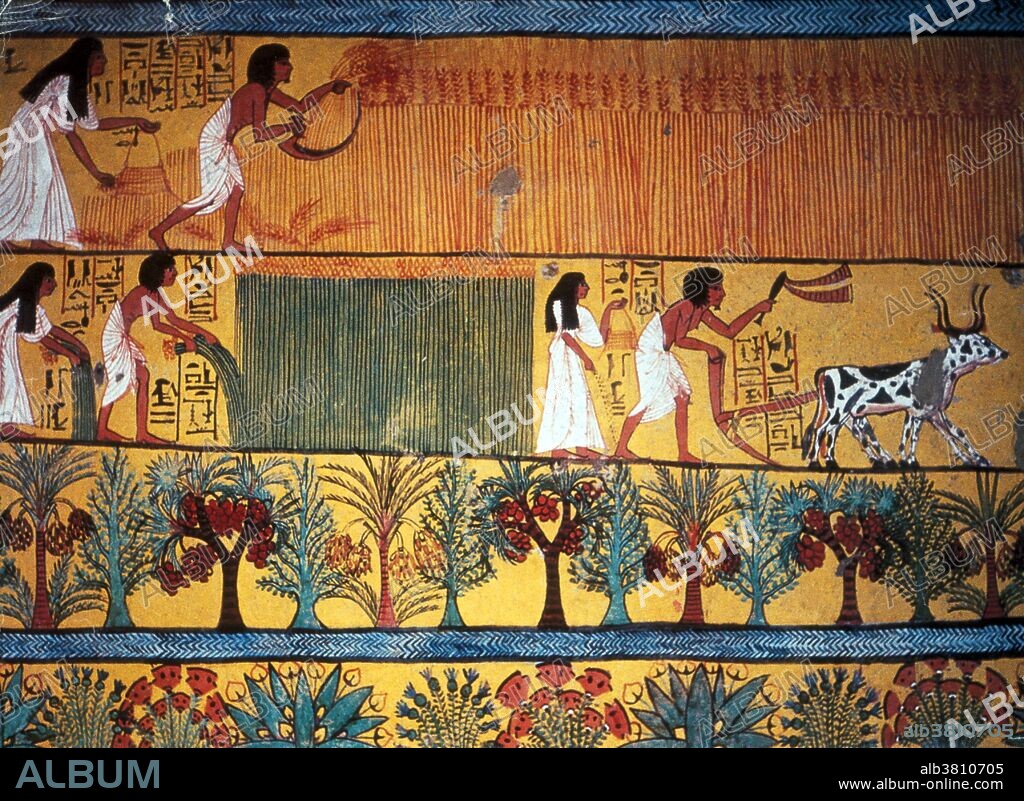alb3810705
Ancient Egyptian Agriculture, 1200 BC

|
Ajouter à une autre Lightbox |
|
Ajouter à une autre Lightbox |



Avez-vous déjà un compte? S'identifier
Vous n'avez pas de compte ? S'inscrire
Acheter cette image.
Sélectionnez l'usage:

Titre:
Ancient Egyptian Agriculture, 1200 BC
Légende:
Voir la traduction automatique
Painting from the burial chamber of Sennedjem, 1200 BC. The civilization of Ancient Egypt was indebted to the Nile River and its dependable seasonal flooding. The river's predictability and the fertile soil allowed the Egyptians to build an empire on the basis of great agricultural wealth. Egyptians are credited as being one of the first groups of people to practice agriculture on a large scale. This was possible because of the ingenuity of the Egyptians as they developed basin irrigation. Their farming practices allowed them to grow staple food crops, especially grains such as wheat and barley, and industrial crops, such as flax and papyrus. The Ancient Egyptian artisan Sennedjem lived in Set Maat (translated as The Place of Truth), contemporary Deir el-Medina, on the west bank of the Nile, opposite Thebes, during the reigns of Seti I and Ramesses II. Sennedjem had the title, "Servant in the Place of Truth". He was buried along with his wife, Lyneferti, and family in a tomb in the village necropolis. His tomb was discovered in 1886.
Crédit:
Album / NYPL/Science Source
Autorisations:
Taille de l'image:
4350 x 3179 px | 39.6 MB
Taille d'impression:
36.8 x 26.9 cm | 14.5 x 10.6 in (300 dpi)
Mots clés:
2E SIECLE AV. J. -C. • 2E SIECLE AV. J.-C. • 2E SIECLE AV. JC • 2EME S AV NE • ANIMAL: BOEUF • ARCHÉLOGIE • ARCHEOLOGIE • ARCHÉOLOLOGIE • BLÉ • BOEUF • CÉLÈBRE • CELEBRITE • CHAMBRE FUNERAIRE • DELABREMENT • DESSIN MURAL • EGYPTE ANCIENNE • FRESQUE • FRESQUES • MURAL • ORGE • PEINTURES MURALES • PLANTER • RUINE • RUINES • TABLEAU MURAL • TECHNIQUE: FRESQUES
 Pinterest
Pinterest Twitter
Twitter Facebook
Facebook Copier le lien
Copier le lien Email
Email
